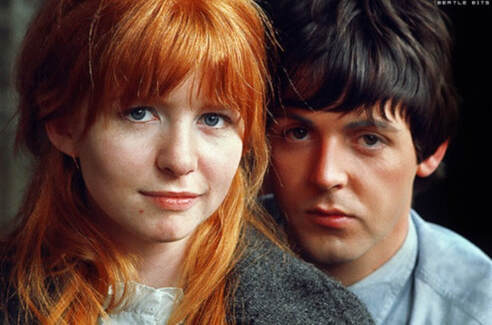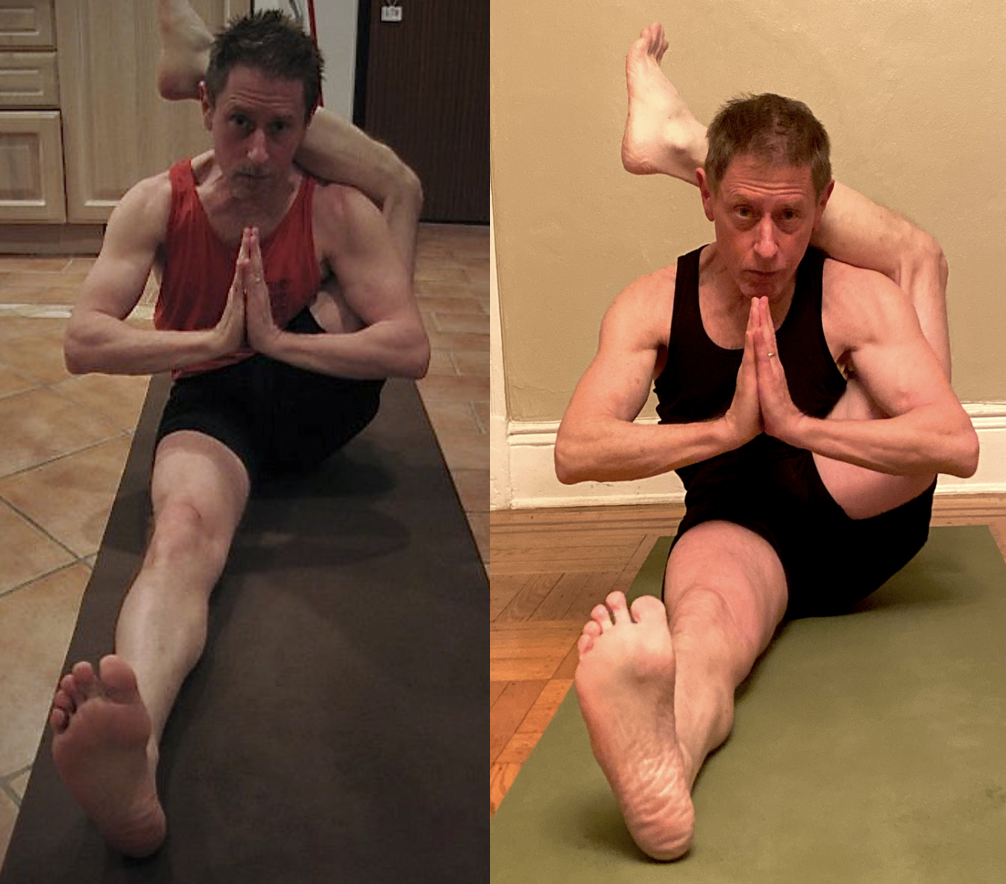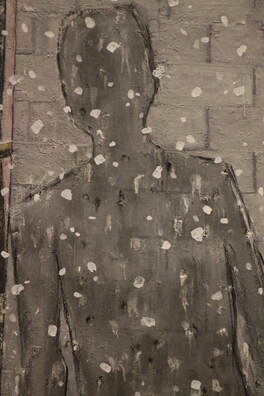|
JOHN PERSON, PAUL PERSON, JANE PERSON -- TIM TOMLINSON
(this piece first appeared in the March 2015 issue of Esquire-Philippines) In 2011, 1 took an assignment to teach writing to international students at New York University’s Shanghai campus. I was new to China, didn’t have the language, so what did I plan for our first Shanghai weekend? I checked the film schedule at Alliance Francaise and, to my surprise and delight, discovered that Saturday afternoon’s feature was a screening of Deep End (1971) by Polish-born, London-based director Jerzy Skolimowski. Deep End was one of the rare great 1970s films that had never made it to video or DVD. I’d seen it only once, back in film school in 1979 or 1980, and it left an indelible impression. Set in London (but shot mostly in Munich), it starred Jane Asher, the radiant redhead who was best known as Beatle Paul McCartney’s girlfriend and, for a short time, his fiancée, ca 1964-1968. Jane Asher. For me, no one more fully embodied the beauty, the insouciance, the esprit of the ‘60s girl than she. The ginger fringe, the mini-skirts, the inscrutable green-eyed stare. I developed a hopeless crush the instant she appeared— I was not quite nine-years old— and my heart broke for her when she and Paul split four years later, because how do you get over a Beatle? But another quality that drew me (and, I’m sure. Sir Paul) to Jane was her appearance of complete self-possession. By the time of A Hard Day’s Night (summer, 1964), when the Beatles’ collective persona resolved into distinct musical and public personalities, the question for young identity-seeking hipsters became: Are you a John person (clever, sharp, aggressive) or a Paul person (cute, charming, sensitive)? Jane was with Paul, yes, but she always seemed more a Jane person (smart, sexy, sophisticated) than anything else. Unlike the rest of us, she was not a satellite orbiting Planet Beatle, even if she sometimes appeared in their pictures. The Shanghai screening confirmed this impression. There she was, Jane Asher, big as life, swinging London icon in go-go boots, mini-skirts, micro-minis, bikinis ...then (breath getting short here) topless, and, finally, climactically, heart-stoppingly nude. Fully nude. Swirling-around-in-a-blue-lit-pool nude and oh-my-god was the crush reignited, along with its accompanying heartache. I left the screening with Jane Asher on my mind. I became a Jane person, too. It is widely supposed that Yoko Ono’s influence on John Lennon was significant, perhaps pernicious. Certainly she enabled John to make discoveries—some complicated and unpleasant (the thorny and meandering “Revolution #9”), others stark and revelatory (his first post-Beatles LP, John Lennon/Plastic Ono Band). What influence, I wondered, did Jane Asher have on Paul? The research I undertook to answer that question— biographies, articles, websites, and song after song after song— was thoroughly delightful, if at times poignant, and its answer conclusive: vast, to say the least, and its beneficiaries include not only Paul, but all of us who love music, and who get from music, to paraphrase Greil Marcus, a sense of promise our own lives fail to provide. Remember, Paul and Jane met in 1963, when “she was just seventeen,” and already something of a celebrity herself She interviewed the Beatles for the BBC’s Juke Box Jury programme. John was aggressive and crude (read: insecure and intimidated), and Paul was affable and gallant (read: Paul). Jane was charmed, a relationship was born. It lasted until mid-1968, at which point Paul had become somewhat less than gallant, indeed, (passively) aggressive and, arguably, crude. Jane returned to the London home she shared with Paul, to discover him in their bed with another woman— an American, no less, with the decidedly unmelodious name of Francie Schwartz. In between charmed meeting and traumatic break-up, in the enchantment, the spell, the torment, and the misery of the Jane years, Paul composed some of the most enduring love songs of the 20th century. Consider Paul’s pre-Jane contributions to the genre: “P.S. I Love You,” “Hold Me Tight,” “Love Me Do.” Simple to simplistic, inoffensive to pleasant, lyrically jejune— the musical equivalent of postcards (which, for the record, I love), or e-mails with emojis (which, for the record, I loathe). Then, in less than a year of Jane, we see “All My Loving” with its in medias res opening and its relentlessly urgent pace; “Things We Said Today,” an upbeat love ballad torqued by a minor key; and “And I Love Her,” whose bittersweet tonal ambiguities hint at dark complicated currents just beneath the lyrics’ idealized romance. Would Paul have grown so far so fast without Jane? Quite possible—he’s Sir Paul, one of the rare, the touched, the anointed. But by 1964, John, George, and Ringo had moved into tony London suburbs where, when not on tour (which wasn’t often) they languished in television and marijuana and alcohol. By contrast, Paul remained in London and moved into the attic of Jane’s family home at 57 Wimpole Street. This is where the McCartney learning curve accelerated at warp speed. Without Jane, or someone very like her (and her family), Paul’s growth would certainly not have been as dramatic. How can I make so certain a claim? Because in one year, with Jane, through Jane, or under the influence of Jane, McCartney’s writing evolved from pop generic to personal, complex, and psycho-sociological (all those qualities typically applied to Lennon)—evolved, in short, from pop to art. One of the great dramas of mid-1960s rock songs, that period when rock ‘n’ roll became rock, was the collision between inexperienced working class scruffs, those unwashed lads from the other side of the tracks who didn’t know which side of the plate the fork went on, and their sophisticated and hitherto obscure objects of desire, the daughters of the aristocracy (or what passed for it), with their fashionable clothes and bon vivant behaviors. Dylan’s “Like a Rolling Stone” and The Rolling Stones’ “19th Nervous Breakdown” are two famous examples in which musically gifted angry young men take their posh intimidating girlfriends down a peg or two. The Beatles contributed their share. Most are attributed to John: “Ticket to Ride,” “Day Tripper,” “Norwegian Wood,” “Girl.” Paul, the story goes, wrote the silly love songs. And no doubt he did— but not when he was with Jane. Jane took him on a roller coaster ride that peaked with rhapsodies (“She’s a Woman”), plunged to tantrums (“I’m Down”), with pleas and put-downs (“You Won’t See Me,” “Drive My Car”) along the way. One reason was Jane’s independence. She gave as good as she got (or nearly). If Paul could pursue his career, as he must, then she would pursue her own (acting). If Paul could take lovers in that pursuit, then Jane could take hers. This is not the posture of a typically submissive Merseyside girlfriend, and young Sir Paul was flummoxed. On Help! (1965), he travels from smitten (“I’ve Just Seen a Face”), to bewildered (“The Night Before”), to vengeful (“Another Girl”). On Rubber Soul, later that same year, he’s beside himself with pain in “You Won’t See Me” (“I just can’t go on/if you won’t see me”), then gleefully derisive in “I’m Looking Through You” (“you were above me/but not today”). “We Can Work It Out,” a Jane-influenced lover’s quarrel, presents one side of the argument: Paul’s. And if this argument is the best he could produce, it’s no wonder she spun him around like a top. What the song shows is that while Paul had his position, Jane resolutely had her own, and she’s wasn’t budging, and she didn’t even have to state it to win. Westminster girls are that slick. If class discrepancy bothered Paul, that didn’t stop him from soaking up whatever culture Jane and the Ashers provided. They played classical music at home and introduced Paul to art with a capital A. Soon he was attending concerts, recitals, gallery openings, collecting art by Magritte, attending plays by Jarry, talking film with Antonioni, and listening to new sounds by Bach, Berio, Ornette Coleman, Sun Ra, and John Cage. Quite a distance from the barber shops and roundabouts of Penny Lane; quite a distance, too, from his band-mates partying in the culturally conventional suburbs. The first masterpiece of this collaboration between Paul and his muse was born in a dream Paul had in the attic bedroom of the Asher home. He woke with a melody in his head, a melody so haunting and complete he was certain that he’d heard it before and unwittingly absorbed it from an earlier source. He tested it on various friends and experts by humming it or playing it on the piano. Where, he wanted to know, had he heard this melody before? And everyone told him the same thing: nowhere. It originated with or through Paul. Doubts of its provenance aside, he began to apply lyrics, which at first failed adequately to serve the melody’s melancholy. Meanwhile, the struggles with Jane persisted. Career obligations pulled them apart, reconciliations (at the Asher family home) brought them together. You get the sense of a young couple in love, but bewildered and exhausted by love’s requirements. You get the sense of a young couple who could not work it out. And in that fatigue, the young couple went off for a short holiday in Spain. On the drive from the airport to the resort, with Jane asleep on his shoulder, Paul’s mood carried him to a simpler past, and the lyrics he’d been searching for finally arrived. 'Yesterday/all my troubles seemed so far away...” The resulting record is chamber music, a string quartet with guitar accompaniment, and Paul’s voice milking the deeply sad, perfectly simple lyrics. It was as if the spirit of Franz Schubert had visited him. By 1966, things were getting wiggier—the hair longer, the skirts shorter, the bellbottoms bellier. The Beatles responded with Revolver, which essayed new forms (Lennon’s droning tape-looped “Tomorrow Never Knows,” Harrison’s Indian-inflected “Love You To”), but it’s the Paul/Jane drama that takes central stage where it drives Paul to higher highs and deeper lows. “Good Day Sunshine,” “Here, There, and Everywhere,” “Got to Get You into My Life”: these celebrate love’s excitement and delicious intimacy. But their flipsides, one deriving directly from the Jane agonies, the other from their cauldron, might each qualify for saddest song of all time. “For No One,” a waltz, depicts the forlorn lover as something less than a footnote to the woman who’s left him so far behind (“You stay home/she goes out/she says that long ago she knew someone/but now he’s gone/she doesn’t need him”). It’s that “long ago” that does it: how is it possible that the securities of love can vanish so quickly, so conclusively? That’s a question I remember asking on the corner of 7th Avenue and West 10th Street watching my former girlfriend walk away with friends laughing, probably, I thought, about me. And when I turned away that night and entered the Christopher Street subway, I joined all the lonely people that Paul wonders about in “Eleanor Rigby,” his other 1966 masterpiece. In “Eleanor Rigby” Paul’s pain elevates to vision; he transcends himself and addresses the human condition. The string quartet of “Yesterday” is doubled, John and George add their voices to the chorus, and a set of lyrics indebted to the emotional tutelage of Jane Asher begins to find its way into anthologies of poetry taught in universities. The relationship’s closing number might be its least memorable but it’s appropriately bi-polar, 1967’s neo-psychedelic bauble “Hello, Goodbye.” In another two years, marked by infidelities, increasing drug use, trips to India, and Jane is out of the picture. Paul’s musical imagination turned away from romantic strife toward others’ stories (“She’s Leaving Home,” “The Fool on the Hill,” “Rocky Raccoon”). The silly love songs spring up (“I Will,” “Oh Darling”) and become, in the post-Beatles ‘70s, something of a manifesto. And Jane? One of the great things about the Paul-Jane relationship is its principals’ categorical moratorium on providing fodder for the gossip mill. The silence suggests deep, mutual respect, which leads me to suspect similar depths in the lyrics of the songs. Jane’s career carried on, with high, sustained achievements in television, film, stage, and later as an author, television personality, and activist. Thinking about her while walking around the streets of Shanghai returned me to one of the moods that animated my adolescence, and I found that melancholy oddly comforting, like reconnecting with an old friend. I want to thank Jane for sticking up for herself, and for causing Paul so much educational pain. I suspect Sir Paul has already thanked her.
0 Comments
These images are separated by twelve or thirteen years. The one on the left is from our kitchen floor during a glorious year in Florence, the one on the right is from the living room floor of our current digs in Brooklyn. I hope what I've lost in flexibility and hair I've gained in kindness and stillness. Writing, travel, yoga, and Deedle have been the constants. I think of the final paragraph of Henry Miller's Tropic of Cancer: “The sun is setting. I feel this river flowing through me—its past, its ancient soil, the changing climate. The hills gently girdle it about: its course is fixed.”
1/9/2022 0 Comments Three EkphrasticsI've been writing ekphrastics to art, music, and movies. These Three Ekphrastics, in Live Encounters, respond to the Jasper Johns Mind/Mirror exhibitions running simultaneously at the Whitney and the Philadelphia Museum of art, to the Préludes flasques of Erik Satie, and to the John Cage Thirteen Harmonies.
|
|



 RSS Feed
RSS Feed